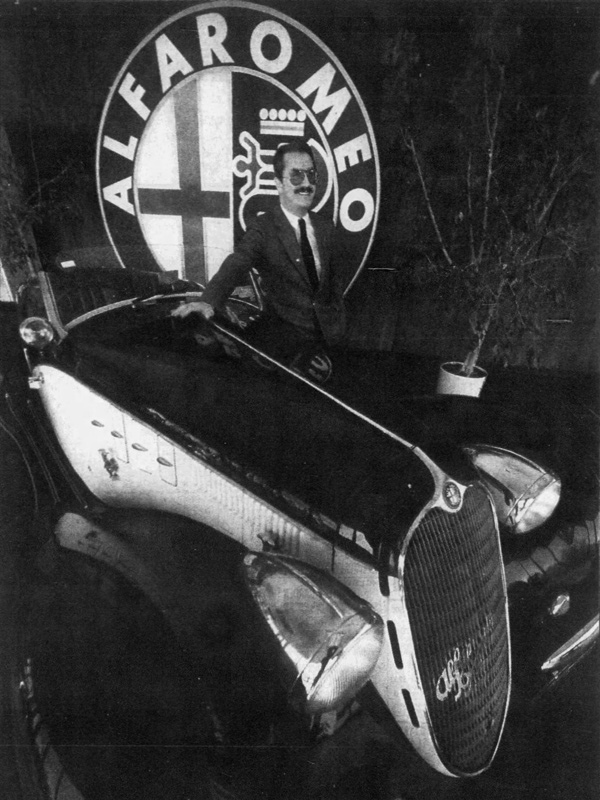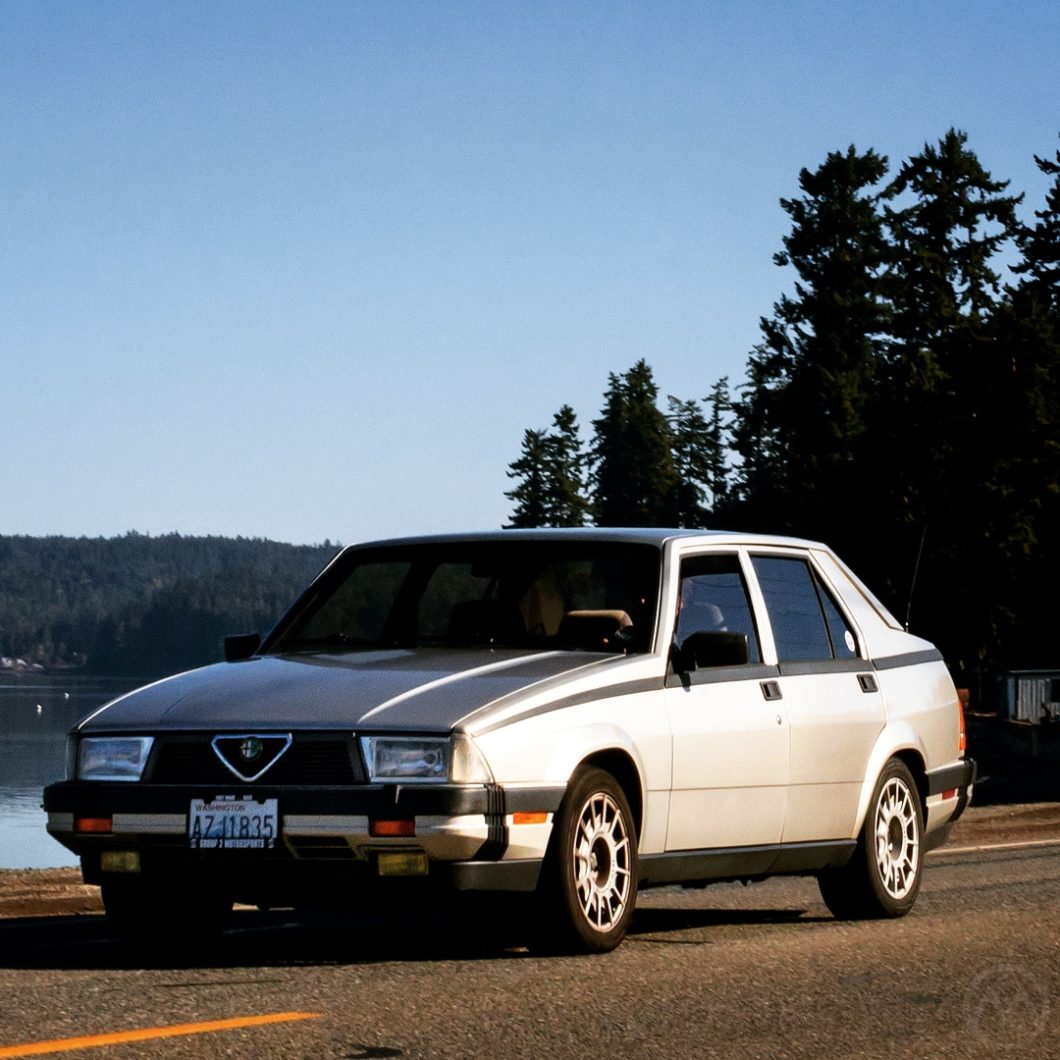The Alfa Romeo Milano was unique to the United States, or at least the name was. Everywhere else it was the Alfa 75, and the House of Arese’s replacement for the first “Nuova Giulietta,” which ran from 1977 to 1985, and the old Alfetta Berlina on which it had been based. But Americans had never seen the wedge-shaped Giuletta, or the AlfaSud, or the Alfa Romeo Six, or the Alfa 90, because none of these cars had been offered in the U.S.
The 75 bowed in Europe in May, 1985 – but it was a little over a year before a U.S. version was readied, which gave Alfa’s beleaguered U.S. operation time to prepare for its arrival and help tailor it to what it felt were “American tastes.”
Indeed, the future of Alfas in the U.S. looked very shaky in the early eighties, and the 75 was viewed as the last hope for real success by Ernesto Vettore. He’d been sent to Alfa’s U.S. operation in the summer of 1983 to either save it or shutter it. Ultimately, the 75 didn’t save Alfa in the U.S., but the car was quite good.
In 1982, Alfa sold only 2,193 cars in the U.S. – about 65% were Spiders, the rest GTV6s. Supposedly, very tiny number of really old leftover Alfetta sedans were still around, too. If so, they were old indeed – Alfa had stopped selling the car in the U.S. (where it was called the “sports sedan”) at the end of 1979.
In the meantime, Alfa had made no effort to federalize more mainstream popular European models like the AlfaSud or the Nuova Giulietta; or even more market-appropriate ones like the Alfa Six, a car that was accurate to describe as a big V6 Alfetta.
Though generally considered an “also ran” in Europe, the Six was a car which could play as a luxury car (as it was designed to be in Italy) and which would have been easy to federalize.
From “75” to “Milano”
In part, that was because Alfa’s U.S. customers displayed little interest in Alfa’s sedans historically, and conversely Alfa management never really tried to tailor its family cars to American tastes outside that group. Now though, Alfa had to have a mainstream model to keep the U.S. operation viable.
Vettore and staffers like product planner Hank Bernstien collaborated with Milan to tailor the 75 a little more closely to American tastes. It would be called the Milano and powered only by the already-federalized Busso V6 (in Europe, a wide range of fours was offered), which meant easier certification.
Ermanno Cressoni’s origami-like shape, styled in-house at Alfa Centro Stile, wouldn’t be changed at all except for beefier bumpers. Inside, the Milano got richer appointments and higher standard equipment levels than Europe. Nicer fabrics and materials, plus things that were expensive extras in Europe like a full set of power windows.
They were a robust car and lots of fun to drive, as you’d expect from a car that shared architecture and power with the GTV6. Early ones were powered by the 2.5L V6, but they were joined by the 3.0 in 1987; a U.S.-model exclusive.
At first, it seemed like the addition had really worked. In 1986-87, Alfa sold 14,501 cars in the U.S., a spectacular gain even if 1987 saw sales slow by almost 20% over model year ’86.
Too Late

But by the time of the 1987 stock market crash, shifting exchange rates and a slowing economy began to bite into sales of pricey European cars. Alfa’s reputation for poor quality didn’t help, though the home office emphasized that Milanos were built on a special line and received multiple quality inspections. Old images die hard and though much better built than the 1970s Alfettas, they weren’t 100% bulletproof.
In 1989, the last year of availability, only 926 Milanos were sold.
Some dealers did not like Vettore, who they said rarely communicated with them, despite the fact that he seems to have been more interested in giving them a viable product to sell than previous Alfa managers.
At the end of 1987 his tenure gave way to Fiat exec Giuseppe Greco. Greco, who would later briefly be CEO of Lamborghini, later said that the 75 was one of his all-time favorite cars, but his time helming Alfa in North America was brief.
By 1990 the Alfa Romeo Dealers of North America had formed a new distribution organization of their own (ARDONA) and were hoping the 164 would succeed where the Milano had not.

